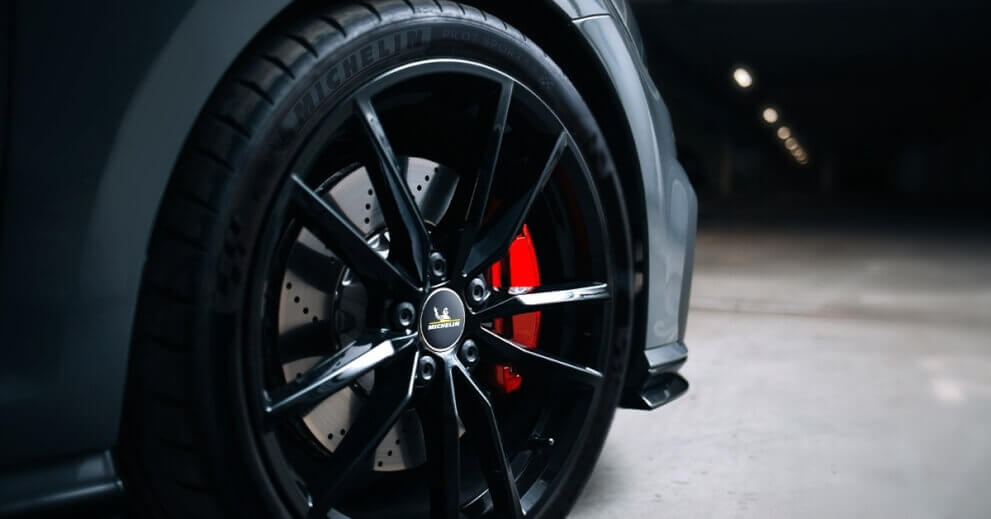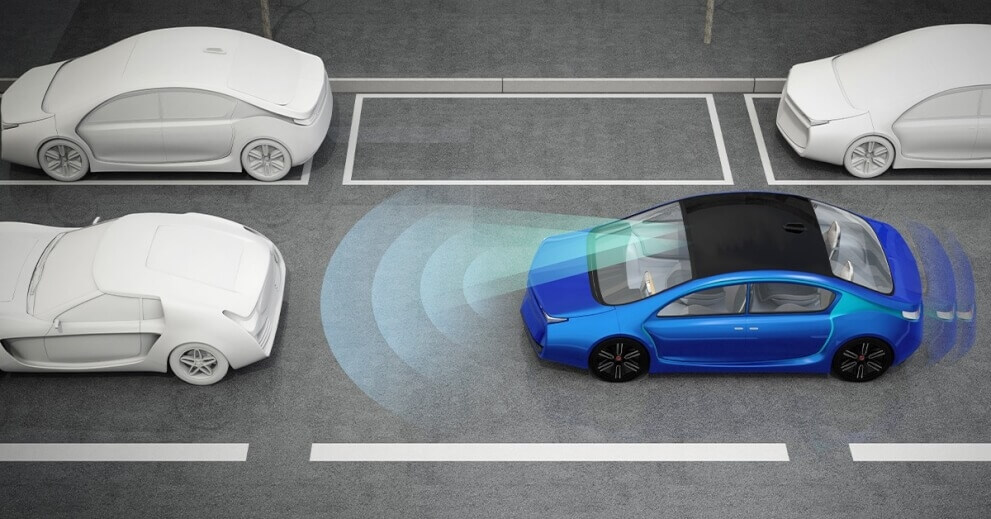The Future of Brake Technology: Enhancing Automotive Safety and Performance
Exploring Innovations and Trends in Brake Systems for Safer and Smarter Driving

Find your tyre
READ THE DIMENSIONS OF TYRES

In recent years, the field of brake technology has witnessed significant advancements, driven by safety concerns, regulations, and the demand for improved performance. These developments encompass various aspects, including materials, design, software integration, and automation. As a result, brake systems have become more efficient, reliable, and capable of delivering enhanced stopping power. In this article, we will explore the trajectory of brake technology, its impact on service and repair, and the upcoming trends that are shaping the automotive industry.
Transitioning from Drum to Disc: A Paradigm Shift in Braking Technology
The transition from drum brakes to disc brakes was a game-changer in the automotive world. Drum brakes, which were conventionally used, had limitations in terms of performance and reliability. However, the introduction of disc brakes brought about a revolution by offering superior stopping power, enhanced heat dissipation, and improved braking performance in various driving conditions.
The evolution of brake technology did not halt with the introduction of disc brakes. Over time, brake systems have advanced through passive, active, and integrated technologies. These innovations have been driven by the need for robust safety measures, compliance with regulations, and the desire to optimize brake system engineering and maintenance.

Passive Brake Systems
Passive brake systems are the foundation of modern braking technology. They comprise components such as rotors, pads, calipers, and brake lines, which work together to convert kinetic energy into thermal energy. These systems have undergone continuous improvements in material composition and component design to enhance their performance, durability, and longevity.
Active Brake Systems
Active brake systems introduced electronic controls and sensors to further enhance safety and performance. These systems include features such as electronic stability control, traction control, antilock braking, and electronic brake force distribution. Through real-time monitoring and intervention, active brake systems offer enhanced control and maneuverability, reducing the risk of accidents and ensuring optimal braking performance.

Integrated Brake Systems
The latest frontier in brake technology is the integration of various vehicle systems into the braking system. This integration allows for seamless communication between different components, enabling enhanced performance and safety. Integrated Brake Control (IBC), developed by ZF TRW, is a prime example of this trend. It eliminates the need for a vacuum pump and conventional large-size booster pumps, resulting in faster actuation and improved overall efficiency. IBC also offers advanced features such as brake feel simulation and energy recuperation, making it a promising technology for the future.
The Influence of Safety Regulations and Market Demands
The rising number of accidents, injuries, and fatalities on the roads has prompted governments worldwide to implement stricter safety regulations. These regulations aim to reduce stopping distances, enhance performance, and ensure the safety of vehicle occupants and pedestrians.
To comply with these stringent standards, automotive brake manufacturers have continuously introduced advanced technologies. Electronic stability control, traction control, antilock braking, electronic brake force distribution, brake-by-wire, and regenerative braking are just a few examples of these advancements. These technologies have not only improved safety but have also pushed the boundaries of brake system capabilities.
Furthermore, market demands for enhanced driver-assist systems, emissions reduction, and higher performance have driven the development of new technologies entering service bays. Manufacturers and brake system suppliers strive to deliver cleaner, smaller, lighter, faster, safer, and more affordable brake technologies. For instance, ZF TRW's IBC and Continental's MK C1 Module are pioneering solutions that address these demands.
In light of the complexity of modern brake systems, a systems-oriented approach to service and repair has become crucial. Studies have shown that a large majority of system-related warranty repairs could have been prevented through routine system maintenance, rather than merely replacing failed parts.
To address this issue, manufacturers and industry professionals emphasize the need for thorough inspections and maintenance of the entire brake system, rather than focusing solely on individual components. This shift towards system thinking ensures the early identification and replacement of worn parts, preventing premature failures and costly warranty repairs.
The Power of Software in Brake Technology
Software plays a pivotal role in shaping the future of automotive safety and braking systems. From simulation modeling to in-vehicle electronic control modules, software enables the exchange of high-speed, complex data across vehicle domains. This capability surpasses what conventional mechanical controls can achieve, enabling significant advancements in system architectures.
By leveraging software, automakers can select specific functionalities and optimize computing power, resulting in tailored solutions for advanced safety technologies, vehicle electrification, and automated driving. Software integration has become essential in managing the complexities of modern vehicles, which contain a vast array of microprocessors, electronic control units, wiring, and software code.
Leading companies such as Delphi and Bosch are at the forefront of utilizing software to drive innovation in brake system design, development, and performance. Delphi, for example, ships billions of lines of software code daily, reflecting the increasing reliance and impact of software in the automotive industry.
As technological advancements continue to shape the automotive industry, automated emergency braking (AEB) has emerged as a significant area of research and development. AEB aims to prevent or mitigate collisions by autonomously applying the brakes when a potential danger is detected. This technology holds great promise for improving road safety and reducing the severity of accidents.
The brake system segment is projected to grow exponentially, reaching a value of $29.4 billion by 2020, according to market research. This growth reflects the increasing demand for advanced brake technologies and safety systems. As companies invest in R&D, we can expect to witness further innovations in materials, drag reduction, activation time, torque vectoring, regenerative braking, and electromechanical advancements. The pursuit of improved performance, safety, and environmental sustainability will guide future developments.
Brake technology has come a long way since the transition from drum to disc brakes. From passive to active and integrated systems, brake technology has evolved to meet safety regulations and market demands. The integration of software and the development of automated braking systems have further elevated brake technology and paved the way for a safer and more efficient driving experience.
As automotive technology continues to advance, the brake industry remains at the forefront of innovation. By embracing a systems-oriented approach to maintenance and continuously pushing the boundaries of technology, manufacturers and service providers can ensure that vehicles are equipped with cutting-edge brake systems that prioritize safety, performance, and sustainability. The future shines bright for brake technology as it continues to shape the automotive industry and safeguard lives on the road. Here are some of the exciting developments shaping the future of brake technology and automotive safety.
1. Electrification and Brake-by-Wire Systems: With the rise of electric vehicles (EVs) and hybrid vehicles, brake technology is adapting to meet the unique requirements of these powertrains. Brake-by-Wire systems, which replace traditional hydraulic controls with electronic systems, offer benefits such as energy recuperation, regenerative braking, and improved integration with other vehicle systems.
2. Advanced Materials and Coatings: Brake manufacturers are exploring advanced materials and coatings to improve the performance and durability of braking systems. These include carbon ceramic composites, lightweight alloys, and specialized coatings that enhance friction characteristics, reduce wear, and dissipate heat more efficiently.
3. Sensor Technology and Predictive Maintenance: Sensor technology is being integrated into brake systems to provide real-time data on brake pad wear, rotor condition, and overall system health. This data enables predictive maintenance, allowing drivers and service professionals to address potential issues before they lead to brake system failure.
4. Smart Brake Systems and Vehicle-to-Vehicle Communication: Brake systems are becoming more intelligent and capable of inter-vehicle communication. Smart brake systems can communicate with other vehicles and infrastructure, enabling features like cooperative collision warning, platooning, and intersection safety. These technologies have the potential to significantly enhance road safety and reduce accidents.
5. Machine Learning and Artificial Intelligence: Brake technology is leveraging machine learning and artificial intelligence to improve performance and safety. These technologies enable intelligent braking algorithms that adapt to individual driving styles, road conditions, and traffic situations, enhancing the overall driving experience.
6. Autonomous Vehicles and Redundant Brake Systems: As autonomous vehicles become more prevalent, redundant brake systems are being developed to ensure fail-safe operation. These systems feature redundant components, backup power sources, and sophisticated algorithms that monitor system integrity in real-time, providing an added layer of safety in autonomous driving scenarios.
7. Brake System Integration with Driver-Assist Features: Brake systems are being closely integrated with driver-assist features such as adaptive cruise control, lane keeping assist, and automatic parking. These integrated systems work together to provide coordinated braking and throttle control, enhancing safety and driver convenience.
8. Improved Noise, Vibration, and Harshness (NVH) Control: Brake manufacturers are focusing on optimizing NVH characteristics to deliver a quieter and more comfortable driving experience. Advanced engineering techniques, such as improved rotor and pad designs, noise-damping materials, and advanced caliper technologies, are being employed to reduce brake noise and eliminate vibrations.
As technology continues to evolve, we can expect further innovation to enhance the performance, reliability, and safety of brake systems, ultimately leading to safer roads and a more enjoyable driving experience.
